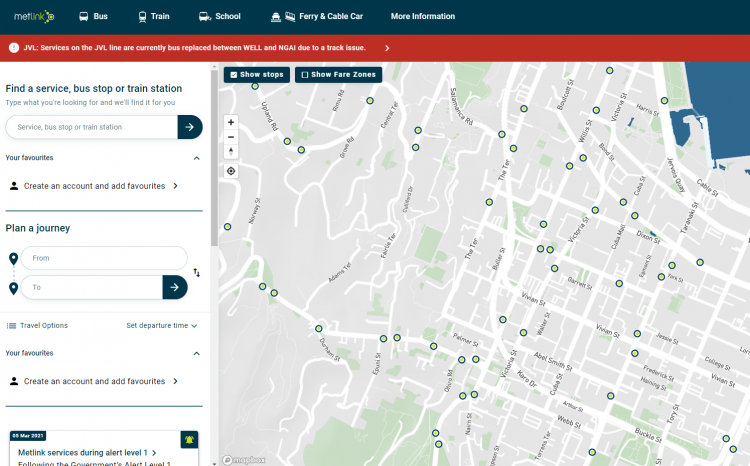There are many different types of people that use public transport, with differing levels of understanding of, and familiarity with the public transport network.
For instance, there are regular commuters, infrequent users, unfamiliar users, and visitors. Within these groups are people with unique requirements, including the potential need for mobility or other assistance.
Despite these variables, most people will at some point undertake pre-journey planning to seek out information about the public transport service before making their journey. People will generally wish to find out about the public transport route, timetables, ticketing and ways to get to and from the public transport service. Even frequent passengers may regularly undertake pre-journey planning by checking real-time information including the location of their bus, train, or ferry, or even public transport vehicle occupancy (crowding) levels.
Sources of information available typically include:

Example of an online journey planning tool from Metlink in Wellington
Pre-journey planning is especially important for new users and for disabled people. New users and people with accessibility requirements need to be confident that they can efficiently and safely complete their public transport journey. For some people, particularly new users, making a public transport journey for the first time may seem daunting.
Providing better information in journey planning tools can help people make more informed travel decisions. This could include:
‘Pedestrian characteristics’ in the Pedestrian Network Guidance